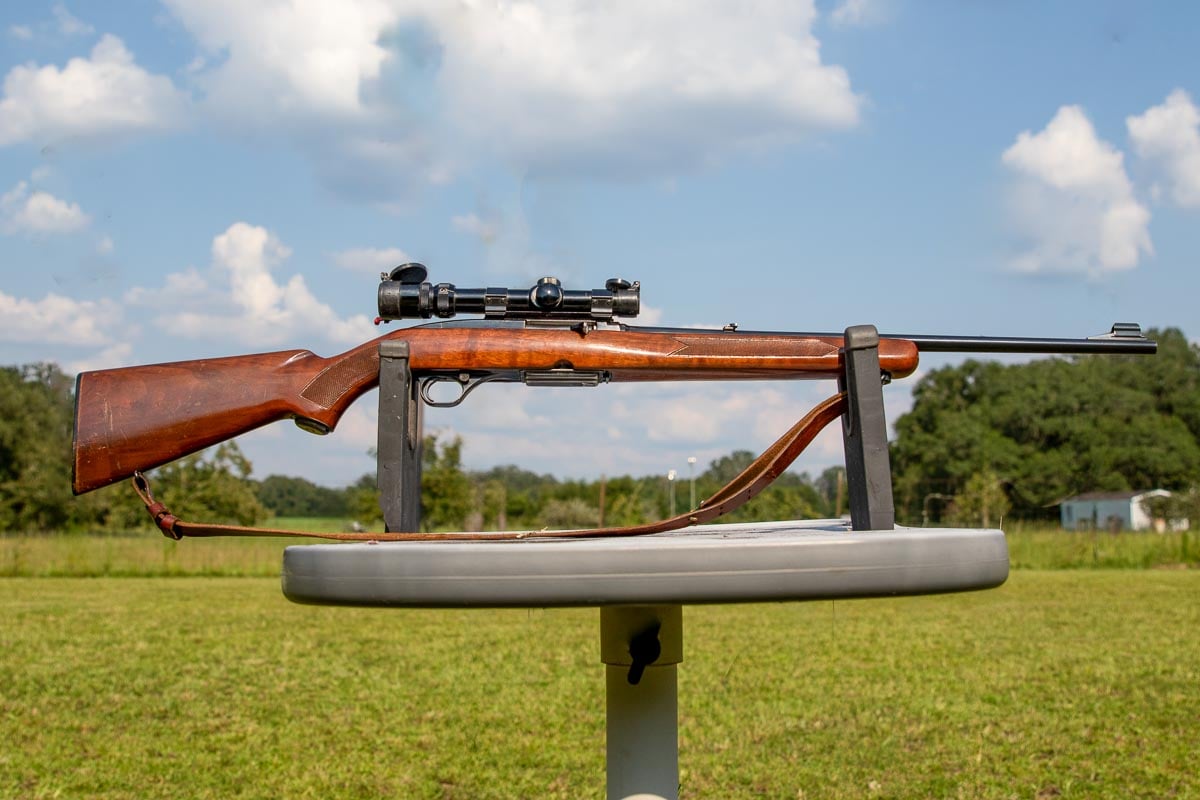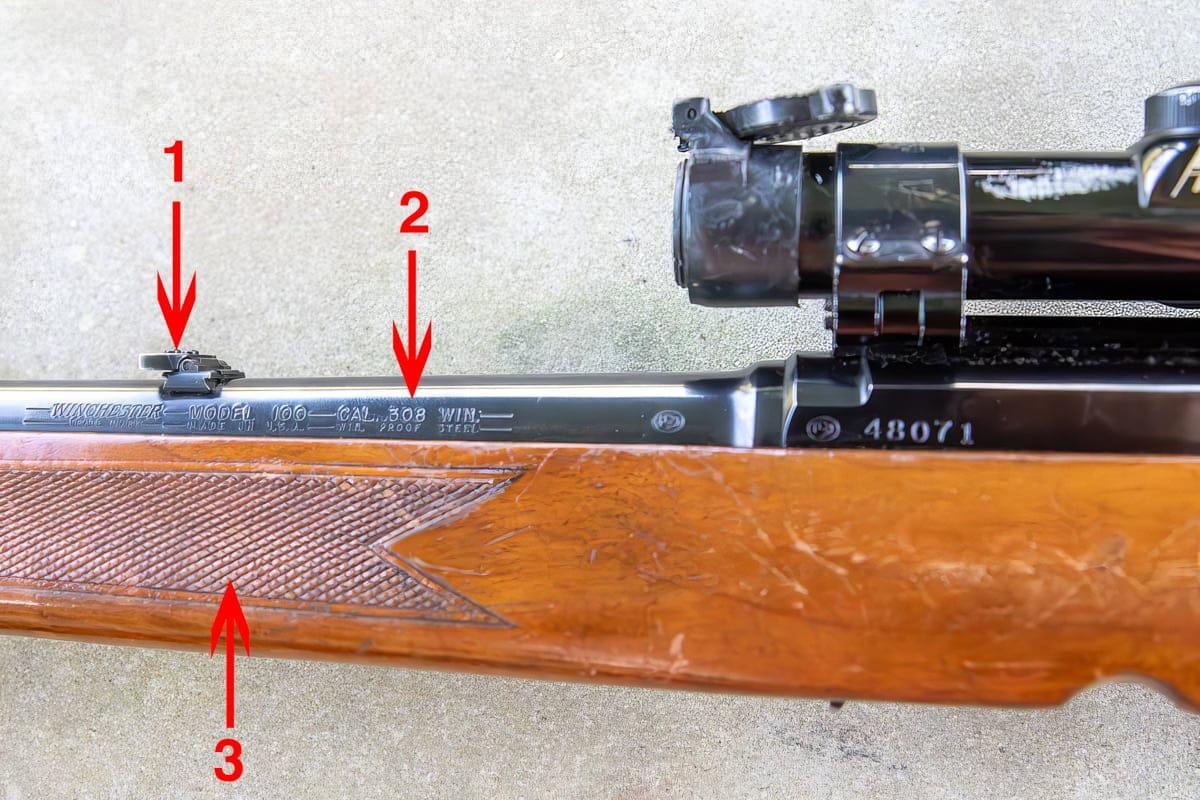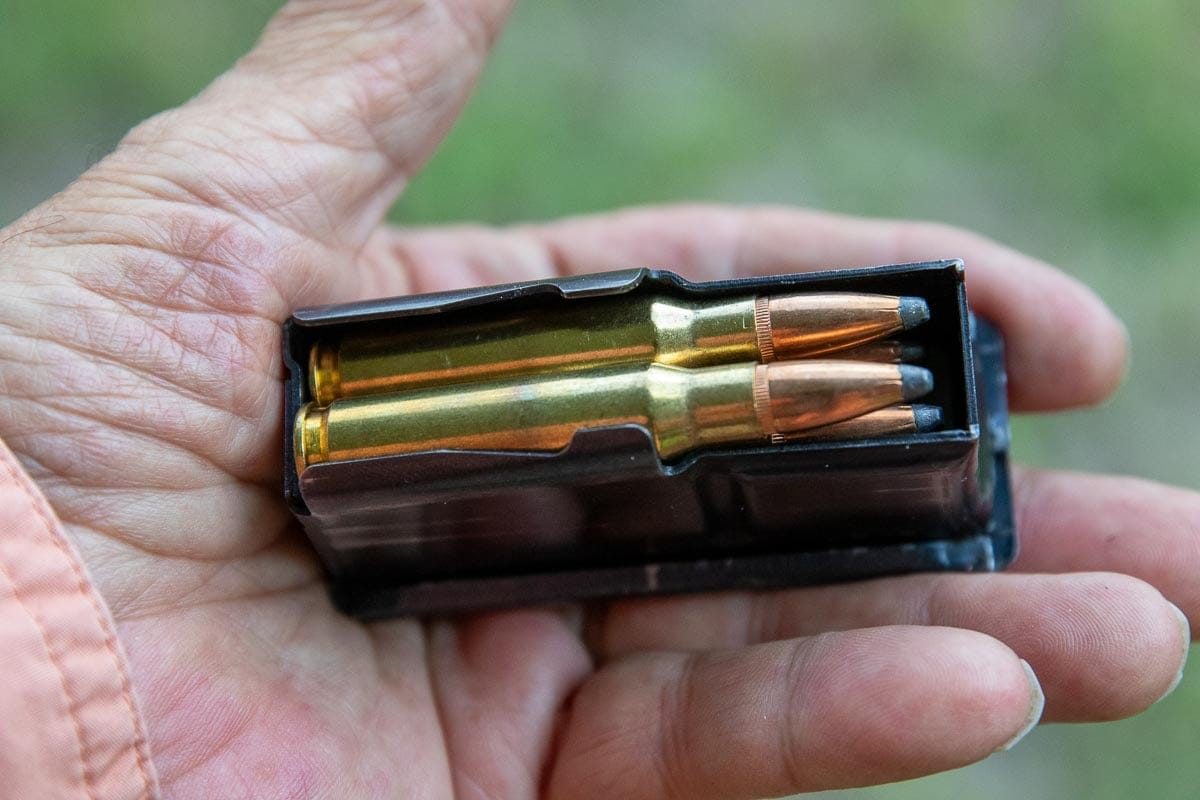The Winchester Model 100 was the sleekest, and perhaps the most accurate, semiautomatic sporting rifle of its time, which was 1961-1973. Its styling was drawn directly from the lever-action Model 88 which preceded it by six years and stayed in production until 1973 with a bit over a quarter million produced. If we’d had Photoshop back then, all we’d have had to do was erase the 88’s lever loop, insert the little bolt handle, and we’d have had the very image of the autoloading Model 100.

The M/100 was offered in .308 Winchester (by far its most popular caliber), .243 Winchester (a distant second in popularity with this model), and the short-action substitute for .270, the .284 Winchester (by far the rarest chambering in Model 100s).
Its advantages included exquisite balance and accuracy exceeding that of its lead competitor, Remington’s Model 742 autoloader. Its biggest shortcoming was a poor firing pin design that led to a recall excuse me, an “advisory warning” to either send the rifle back to Winchester or get a new, updated firing pin for free and usually with a check to compensate your local gunsmith for installing it. I disliked its flip-down semi-buckhorn rear sight, which could accidentally get folded down just by pulling it out of a rifle scabbard.

Winchester was said to have discontinued it because it had become too expensive to manufacture at a competitive price. Winchester’s 1964 production economies that gave post-’64 Model 70s and 94s a bad rep didn’t seem to impact the 100 series except cosmetically, with impressed stock checkering replacing cut checkering.
I couldn’t help but notice that the 100 never equaled the Remington equivalent’s sales. This may have been due in part to Remington’s more aggressive advertising for its Model 742, and partly because the Remington was available in the super-popular .30-06; the short-action Model 100’s .308 Winchester cartridge had only been introduced six years before the Model 100 and had not yet developed the strong following the classic ’06 had.
Shooting the Model 100
I bought my Model 100, serial number 48071 at age 18 at Haggett’s Sport Shop in Concord, New Hampshire. It was used but in pristine condition. In trade, I left behind my Marlin 336SC in .35 Remington. I had gone from still-hunting to drive hunting with friends during deer season, so multiple times a day after deer drives we’d get picked up and dumped in the back of a pickup to be trucked to our next location.
The law required the rifles to be unloaded. It was a hassle to lever each round out of a Marlin or Winchester 94 only to reload one by one again at the next location, so I wanted a removable box magazine. I had tried the most popular choice, friends’ Remington 742s (almost invariably in .30-06) and found them more muzzle-heavy than the Winchester, which fit me perfectly. The Remington had a lighter, crisper trigger that many favored, but I found the smooth roll of the Model 100’s trigger to be no impediment to shooting. The 100 is a very soft-shooting .308. If you look closely at the lead photo, the spent casing is just leaving the ejection port but the muzzle has barely risen. All these decades later, I have it still.

Accuracy
The Model 100 quickly established a reputation for accuracy. It shot at least as tight as the M14 I was issued one year by the state Rifle & Pistol Association for high-power competition. (If you’re familiar with the M14 and M1A gas systems, you’ll recognize the one in the Model 100. Winchester learned a lot producing M14s for the US Government.)
In 2014, Field & Stream magazine’s editor David Petzal was doing a rifle accuracy test and, just for the hell of it, included an old Model 100 brought to the range by fellow F&S writer Dave Hurteau. Petzal wrote, “’Oh ho ho,’ I said, ‘you’d be lucky to hit Dutchess County, New York, with that gun if you were standing in the middle of Dutchess County.’ So Hurteau shot the awful thing and produced a couple of groups that measured probably an inch and an inch and a quarter–fine, attractive groups that would do credit to a modern bolt-action.”

Many give credit for its tight groups to the Model 100’s one-piece stock, and also its solid lockup. Petzal credited modern 21st Century ammo with Mr. Hurteau’s tight groups with his. I dunno about that: I was getting sub-two-inch groups with military surplus 7.62mm NATO with mine back in the ‘70s, and with Winchester’s own 150 grain Power Point .308 hunting loads. In a video titled “Remarkable Rifle” on the USOG YouTube channel (URL: https://www.youtube.com/watch?v=R5VilRZYwoc), we learn of a Model 100 in .243 that gave the narrator ¾-inch groups with Winchester 58-grain varmint loads. And that was a carbine with 19” barrel, no less, not the more common rifle version with 22” tube.
Personal Experience
My competition shooting experience began in my early teens with New Hampshire turkey shoots, the format of which was shooting deer targets, both standing and running on pulleys, from 100 yards with the winner of each relay receiving a frozen Butterball turkey. I began with the Marlin .35 but started winning with the Winchester Model 100 .308.
A lesson to learn from, because it’s too late to save me. At one of those matches we’d been shooting at deer targets facing to the white-tail’s right, and when those were too patched up to continue, fresh targets were mounted. I didn’t notice that the new ones were facing the opposite way, and aiming for the shoulder, my Model 100 and its semi-buckhorn iron sights gave me a great group in the deer’s butt. That was my signal to scope it, with a Bushnell 1.5-4X variable, which remains upon it to this day.
Fast forward into the ‘70s. My late first wife and I were newlyweds when we went together to a turkey shoot at the Candia Fish & Game Club in New Hampshire. Competition was heavy that day. A military rifle team had finished an NRA High Power rifle match early at another range, and on their way home, stopped at the turkey shoot with their National Match M14s. On the first relay, they shot against my young wife, a tall and athletic woman with a very precise trigger finger. She used my Model 100 with the Bushnell scope… and beat them, winning the turkey with a 1.5” group in the deer target’s heart, fired from offhand like everyone else. They did not look pleased when they packed up their match rifles and left.
As time went on that rifle spent some time with me in the trunk of a patrol car. When I got bitten by the accuracy bug and went to sub-minute of angle bolt action rifles for Standing Deer competition and for when I hunted with rifle instead of handguns, it was still the old Model 100 that I used for Running Deer.

It had been in semi-retirement in my gun safe for many years when I took it out for the pictures you see here. Shooting it was a pleasant blast from the past. I wish it was still available new for current generations, but I know this one will go to one or another of my grandchildren when the time comes.


